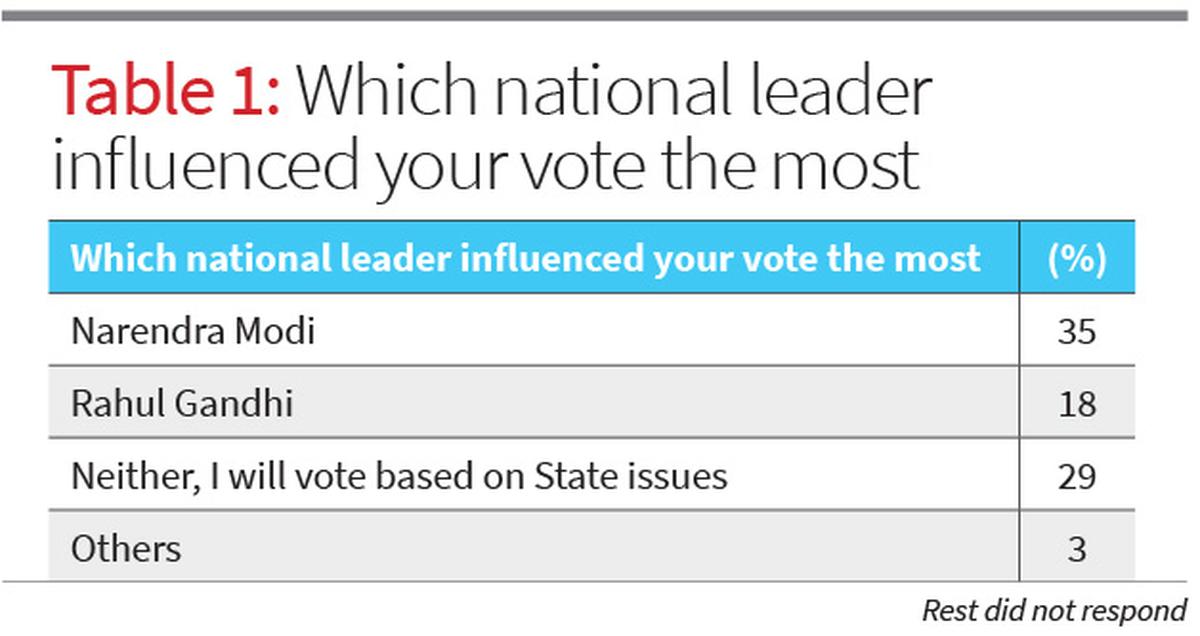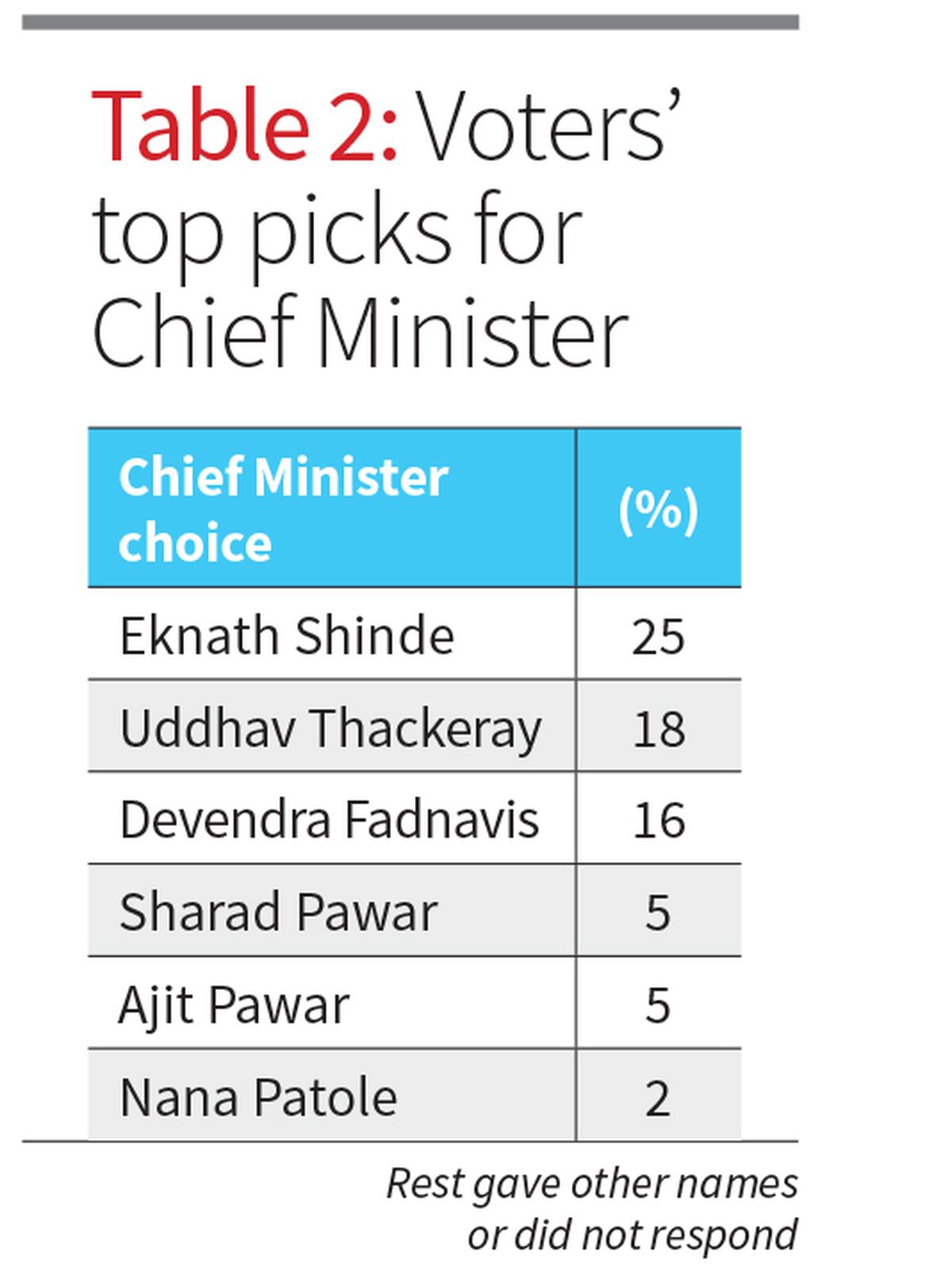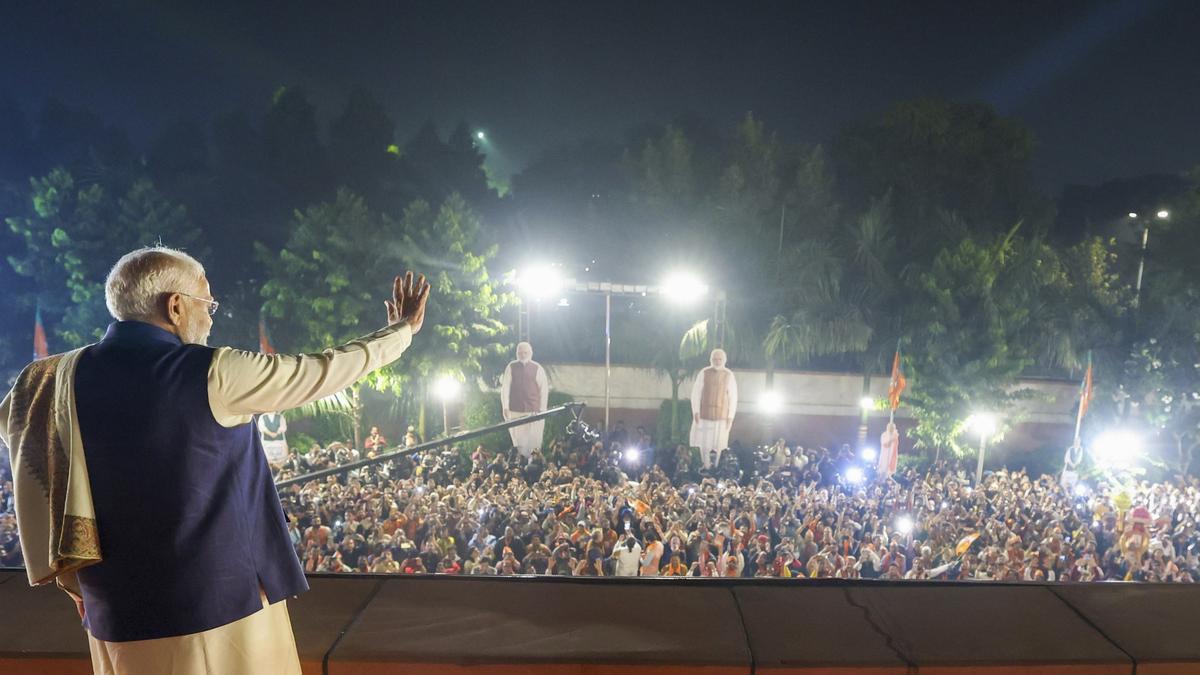
Prime Minister Narendra Modi at the BJP headquarters in New Delhi on November 23, 2024. Photo: X/@narendramodi via PTI
While Assembly elections are about State issues and State-level leaders, it is often that national-level leaders play a critical role in State-level choices. In the recently-concluded Maharashtra Assembly elections, more than four voters mentioned that their vote choice was shaped by considerations of national leadership (Table 1).

Prime Minister Modi’s role in boosting the Mahayuti performance was evident in over one-third of the respondents mentioning the Prime Minister as an important influence in their voting decision. Close to two of every 10 mentioned Rahul Gandhi as the national leader who influenced their voting choice. It is important to highlight that three of every 10 respondents said that their vote choice was influenced by local issues and not national leaders.
Of late, Assembly elections are also often centred around the question as to who will be the next Chief Minister. In the recent elections in Maharashtra, neither the Mahayuti nor the Maha Vikas Aghadi (MVA) projected a Chief Minister face. The compulsions in the two alliances were distinctly different. In the Mahayuti, the dominant party (BJP) had conceded the Chief Minister position to the leader of a junior partner in the coalition government they were running. Even though the BJP was contesting a majority of the seats in the elections, it preferred to face the poll with the existing arrangement with no clear commitment to the post-election choice of leadership if they came to power. For the MVA, the leadership issue was more complex. The Shiv Sena (UBT) was keen that their leader Uddhav Thackeray be named as the CM candidate. The Congress and the NCP(SP) wanted the choice to be made after the elections.

In the Lokniti-CSDS survey, one fourth of the respondents favoured the incumbent Chief Minister as their preferred choice. The incumbent invariably has greater visibility and recognition. Mr. Uddhav Thackeray was endorsed by close to one of every five respondents and Devendra Fadnavis was mentioned as the preferred Chief Minister choice of a little over one-sixths (Table 2).
Among these who voted for the Mahayuti, Eknath Shinde had a ten percentage point lead over Mr. Fadnavis. This implies that even among BJP supporters, there seemed to be greater support for Mr. Shinde as compared to Mr. Fadnavis. Given the performance of the BJP in the elections, it is now likely that the party favours someone from BJP to lead the coalition government.

Within the MVA, close to four of every 10 favoured Mr. Uddhav Thackeray and over one of every 10 favoured Sharad Pawar. The differences within the MVA were evident with one in every 10 even favouring Mr. Shinde as the preferred Chief Minister (Table 3).
(Sandeep Shastri is the Director-Academics at NITTE Education Trust and the National Coordinator of the Lokniti Network)
Published – November 25, 2024 01:11 am IST


